
Plants of the Past
Several of TVA’s coal-fired power plants have been closed over the years. But these shuttered powerhouses deserve recognition for the role they played in the development of the Valley—generating electricity, jobs and history.
Strictly speaking, TVA was not founded as simply a power company. Yet the dams it built to control flooding in the area provided a powerful side benefit—hydroelectric generation. Once the public got a taste of it, demand for electricity grew. And as the Valley began to prosper—thanks to TVA’s economic development success—industrial demand grew, too.
In the 1940s, as the United States’ entry into World War II loomed, demand was increasing from various companies that supported the emerging war effort. Those demands came in particular from the aluminum industry—which was involved in the production of everything from helmets and identification tags to gas masks and airplanes—and from the Valley's Oak Ridge National Laboratory, for its nuclear work.
Demand quickly outpaced the amount of electricity the hydroelectric dams could produce, and TVA saw the need for a new kind of generation: coal. TVA acquired from the War Department and purchased utility-owned coal-fired plants before it completed construction of its first coal-fired plant—Watts Bar Steam Plant in 1942. At its height in 1985, TVA’s coal fleet would include 12 plants.
Changing technology, increased environmental regulations and economics have shifted the importance of coal in TVA’s overall power generation portfolio. More coal-fired plants will close in the coming years as TVA’s generation emphasis continues to shift toward cleaner sources of power.
TVA's coal plants, though, have earned a part in history because of their many contributions to the Tennessee Valley. Here's a look at our shuttered powerhouses.
Wilson Steam Plant (1919 to 1966)
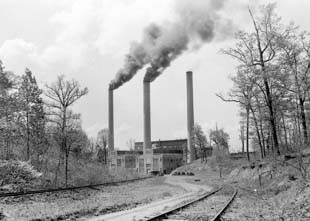 Muscle Shoals, Ala.
Muscle Shoals, Ala.
The U.S. Army Corps of Engineers began building Wilson Dam in 1918 to provide power for the two nitrate plants that were producing munitions for World War I. However, the dam would take six years to complete. With the need for power urgent, the Corps began construction of the Wilson Steam Plant in 1918, and it began generating electricity a mere 10 months later. The War Department transferred ownership from the Corps to TVA in 1933, the year the agency was formed.
The plant was used intermittently during the 1940s and 1950s, as larger plants were built and could produce sufficient power for the Valley. The steam plant was retired in 1966 and demolished in 1968.
Watts Bar Steam Plant (1942 to 1982)
 Spring City, Tenn.
Spring City, Tenn.
Watts Bar was constructed in 1942, and last generated electricity in 1982. Its four units were able to generate 267 MW. As the first TVA-built plant, architects wanted Watts Bar to be a template for future plants, and also a showcase. Planners created a vantage point for people to view the turbine room and created a spacious overlook balcony, which was copied at future plants. Though the steam plant was demolished in 2011, the Watts Bar reservation still contains a dam and a nuclear plant, and was once the only TVA site to feature three types of generation.
Environmental investigations are being conducted at this site under the TDEC Order on coal combustion residuals (CCR). View the schedule.
John Sevier Steam Plant (1955 to 2012)
 Rogersville, Tenn.
Rogersville, Tenn.
Construction was completed in 1957, and supplied power through 2012. The plant featured four coal-fired units and generated 704 MW of power—enough electricity to power 350,000 homes. Initially planned as a six-unit plant, only four 200 MW units were constructed. Units 1 and 2 went into commercial operation in 1955, while Unit 3 went online in 1956 and Unit 4 the following year. The plant will be torn down in coming months, and the vacant land sold for industrial or commercial purposes.
The plant closed with the completion of the John Sevier Combined Cycle Plant, a gas plant with a summer peaking capacity of 880 MW. Environmental investigations are being conducted at this site under the TDEC Order on coal combustion residuals (CCR). View the schedule.
Widows Creek Fossil Plant (1952 to 2015)
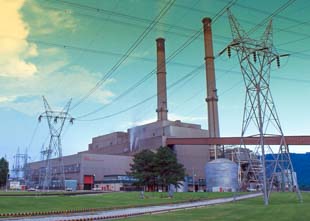 Stevenson, Ala.
Stevenson, Ala.
Widows Creek was the third steam-electric project built by TVA. Units 1 to 8 were built between 1952 and 1965. Units 1 to 6 were idled in 2013 and 2014, Unit 8 in 2014 and Unit 7 in 2015. Together, the eight units could generate 1,800 megawatts.
At the time of its first construction, Unit 7—at 500 MW—was the largest steam-generating unit in the world. (By the time sister Unit 8 was completed, also a 500 MW unit, other plants being built boasted larger megawatt capabilities.)
Colbert Fossil Plant (1951 to 2016)
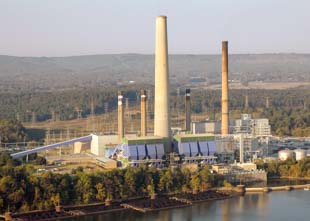 Tuscumbia, Ala.
Tuscumbia, Ala.
Colbert was the sixth steam-electric project to be planned, designed and constructed by TVA. Units 1 to 4 were built between 1951 and 1955, with a fifth unit added in 1965. Total generation capability was 1,000 MW. Unit 5 was idled in 2013, while the other units ceased generation in 2016. The final overall cost of the plant construction was slightly more than $99 million, or $124 per kilowatt, which was the lowest cost per kilowatt of any of the seven TVA steam plants built in the 1950s. The cost to purchase the land and the land rights—included in the grand total—was $232,089.53.
Allen Fossil Plant (1956 - 2018)
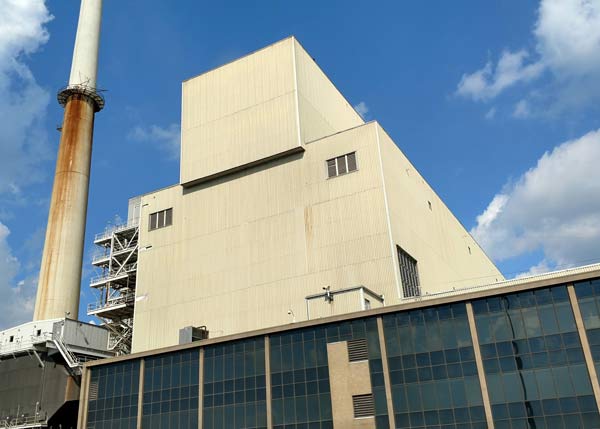 Memphis, Tenn.
Memphis, Tenn.
TVA’s Allen Fossil Plant was located on 500 acres on McKellar Lake, five miles southwest of downtown Memphis. Memphis Light Gas & Water built the plant, with construction beginning in 1956 and all three of its units were generating power by October 1959. The plant was leased to TVA in 1964, and TVA purchased it outright in 1984. The plant was named after Thomas H. Allen, who was a former president of the Memphis utility.
The Allen Fossil Plant’s three units had a total summer net capability of 741 megawatts, and Allen Fossil Plant Unit 2 set a run record of 198 days. All three of Allen’s coal-fired units were retired by June 2018. They were replaced with the Allen Combined Cycle Natural Gas Plant, which went into operation May 2018. The site also features a 1 megawatt solar farm and together they are able to generate roughly 1,000 megawatts of power—or enough to power more than 500,000 homes and businesses with low-cost and reliable electricity in the greater Memphis area and TVA’s western service territory.
Johnsonville Fossil Plant (1949 - 2017)
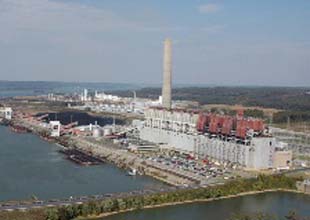
TVA’s Johnsonville Fossil Plant was located on 720 acres of land near Waverly, Tenn. It was named for the town of Johnsonville, which was flooded during the formation of the adjacent Kentucky Lake. The town was relocated several miles south and named New Johnsonville.
Plant construction began May 12, 1949 with the first of the plant’s 10 operating units going into service Oct. 27, 1951. The final unit began generating electricity on Aug. 20, 1959.
Units 1 through 4 ceased generation December 2017 as part of a consent decree with the Environmental Protection Agency (EPA). Units 5 through 10 were idled in 2012.
Paradise Fossil Plant (1959 - 2020)
 Paradise, Kent.
Paradise, Kent.
TVA’s Paradise Fossil Plant was located in western Kentucky on the Green River near the village of Paradise. The plant had three units and three large natural-draft cooling towers. Paradise was TVA’s only coal-fired plant with cooling towers, which are typically seen at nuclear plants.
Units 1 and 2 went on-line in 1963, each with a generation capacity of 704 megawatts. At the time, they were the largest operating units in the world. A third unit became operational in 1970, with a summer net generating capacity of 971 MW. In 1985, a barge-unloading facility was added so that coal could be delivered by barge as well as by train and truck.
Paradise units 1 and 2 were retired in 2017. After a detailed review of fuel, transmission, economic and environmental impacts, as well as reviewing public input, on Feb. 14, 2019, the TVA Board of Directors approved the retirement of Paradise Unit 3, which ceased operation in February 2020, effectively closing the plant.
TVA invested approximately $1 billion to build a gas-fired plant that to replace Paradise units 1 and 2. The new combined cycle plant was opened in April of 2017.
Bull Run Fossil Plant (1967-2023)
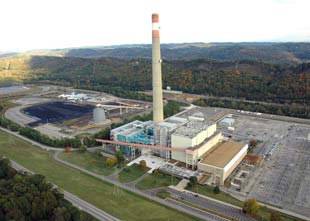 Clinton, Tenn..
Clinton, Tenn..
Bull Run Fossil Plant was located on 750 acres in the Claxton community of Anderson County, Tennessee, on the north bank of Bull Run Creek, directly across the Clinch River (Melton Hill Lake) from Oak Ridge, Tennessee. Bull Run Fossil Plant was the only single-unit power plant in the TVA system. When the generator went into operation in 1967, it was the largest in the world in the volume of steam produced.
The plant was originally designed for up to 950 megawatts and had a summer net capability of 765 megawatts when it retired – enough to supply more than 440,000 homes. Bull Run went into operation on June 12, 1967. At the time it was built, this giant cross-compound machine was nearly 1.5 times as powerful as the largest units then in operation and represented a new peak of achievement in single unit output. During the plant’s lifecycle, it was awarded for having the “Best Heat Rate” in the United States fourteen times.
The TVA Board of Directors approved the retirement of Bull Run Fossil Plant on February 14, 2019, after a thorough environmental review process that included receiving public input. The plant retired on December 1, 2023. The plant finished strong after an impressive 48-day continuous run to burn down the last of the remaining fuel onsite.